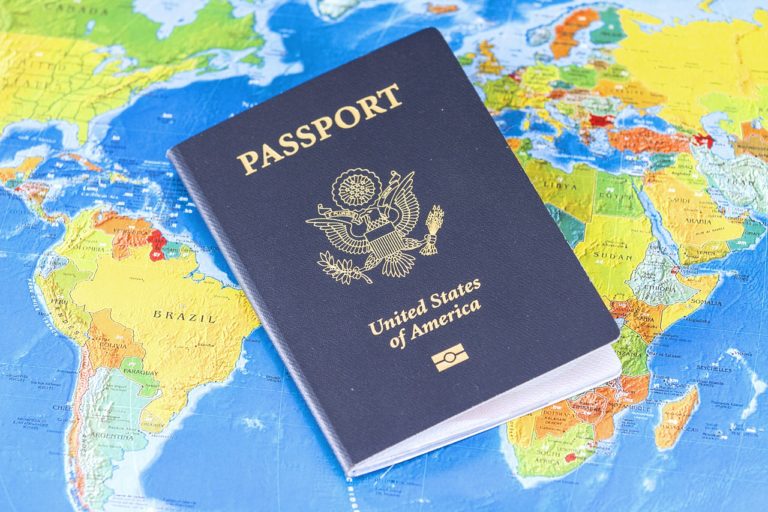One of the most discussed topics among International Medical Graduates (IMG’s) is the migratory status. Choosing between a J1 Vs H1B Visa for Medical Residency can be confusing due to the complexity of the topic. Please note that this post is aimed to be educational only. It is highly recommended to consult this issues with an experienced immigration lawyer or any other professional with knowledge in this area. In this post, I will mention the basic features of the two visa options for residency and their respective characteristics.
DEFINITIONS:
- International Medical Graduate (IMG): Any physician who received his or her medical degree from a medical school outside of the United States or Canada, regardless of citizenship. These type of graduates will need a visa for residency (unless U.S. citizen or green-card holder).
- U.S International Medical Graduate (IMG): Any U.S. citizen who received his or her medical degree from a medical school outside of the United States. Visa sponsorship is not an obstacle for this group.
- Immigrant: Permanent U.S resident visa. Green-card holders are considered part of this group
- Non-immigrant: Temporal visa. The visas offered for U.S. residency training programs are the non-immigrant J1 and H1B visas.
- J1 visa: Exchange visa.
- H1B visa: Temporary worker visa.
- Graduate Medical Education (GME): The education offered after medical school in the United States is termed Graduate Medical Education or GME. Residency programs in the U.S. are considered GME programs.
BASIC REQUIREMENTS FOR ENTRY INTO A U.S GRADUATE MEDICAL EDUCATION (GME) PROGRAM:
- ECFMG Certification: Obtained after finishing the medical credential verification done by ECFMG and the USMLE Step 1, 2 CK, and 2 CS exams.
- Apply for a residency training position:
- Apply through ERAS.
- Attend interviews at the programs.
- Register with the RNMP MATCH or get an outside-of-the-match offer (pre-match).
- Secure a letter of offer or contract from the program.
- Obtain the adequate visa for the residency training.
MAJOR DIFFERENCES BETWEEN THE J1 VISA AND H1B VISA
| Features | J1 Visa | H1B Visa |
|---|---|---|
| Founding source | Multiple: ECFMG, Department of State & Homeland Security | Unique: US employer (Residency program) |
| Requirements | USMLE Step 1, Step 2 CS, Step 2 CK exams, and ECFMG Certificate | USMLE Step 1, Step 2 CK, Step 2 CK, Step 3, and ECFMG Certificate. |
| Type of Visa | Exchange Visa - Non-immigrant (temporary visitor) | Employment Visa - Non-immigrant (temporary worker) |
| Time limit | 7 years | 6 years (may be extended in certain circumstances) |
| Fees | ECFMG fee: $325. SEVIS fee: $180. J1 Visa application and other fees: $160 to $300 approximately. Total: $665 to $805 approx. | From $1500 to 6000 (Family, lawyers, etc.) Usually partially or fully covered by the residency program |
| Processing time | 1-2,5 months approx. | Conventional time: 3-5 months. Premium processing ($1225): 15 days. |
| Requires strong ties to home country? | Yes. | No. |
| Mandatory return to home country after finishing residency? | Yes, a two-year home country return is required. It can be waived by working 3 years in an underserved area. | No. |
| Spouse and family visa sponsorship | Yes, J2 for dependents (spouse and children under 21 years old) | Yes, H4 for dependents (spouse and children under 21 years old) |
| EDA (Employment Authorization Document) for spouse | Yes, the dependant can apply after their entry to the United States | No. Spouse cannot work. |
| Dual intent (Can the visa holder apply for permanent residency such as Green card?) | No. After finishing the aplicants must return to their home country for 2 years or do a waiver for 3 years, then apply for a job on a H1b visa, and then transition to Green Card through their employer. | Allowed. |
| Can the employer sponsor for U.S. Permanent Residency? | No. | Yes. After finishing the training period, the applicant would need to get a job on an H1b visa and then transition to Green Card right away. |
| Advantages | Easier process. Faster and cheaper option. The spouse can work by applying for a EAD. The majority of programs accept this type of visa. Most fellowship programs accept J1 visas. | Dual intent allowed to achieve a permanent residency status faster than the J1 visa. No mandatory return to home country after finishing the training program. More job options to apply for after residency/fellowship in the US. |
| Disadvantages | No dual intent allowed. Mandatory two-year home country return. Visa stamp needs to be renewed every year at a US consulate outside of the US. Renews every year. | Higher fees for the application. Spouses cannot work. A minority of residency, and even worse, fellowship programs offer an H1b visa. This narrows the options for fellowships although it is still possible to get a position. |
Now, there are several scenarios that can occur for every person and that is why it is important to understand that there are several strategies that one can take to select the best visa option for the residency training. Again, I would like to stress the importance of consulting with an experienced professional to make the best migratory strategy depending on one’s future aspirations.
There are two elements that a residency applicant should consider when creating his or her rank order list (ROL). The first element is the interest in obtaining a permanent residency status in the United States and thus live and practice medicine in this country. The second element is the academic goals mostly related to the intention of pursuing a fellowship after residency. There are other important aspects to keep in mind, but these two are important determinants one’s future decision in the ROL.
1. Interest in a permanent resident status:
If an applicant is interested in practicing medicine after residency and obtaining a permanent resident status in the United States, the H1b visa is probably the best option. (1) An H1b visa is usually issued for 3 years and it can be extended one time for 3 more years – although there are certain circumstances in which it can be extended even further.
Should an applicant be interested in a permanent status after residency but also be aiming to pursue a fellowship, the time limit of the H1b visa should be acknowledged. Since the H1b visa has a theoretical limit of 6 years from which 3 years were used for residency training, there are only three years available for fellowships. If the fellowship of interest is longer than 3 years, it is important to plan in advance with a lawyer the best strategy to accomplish one’s goals. One strategy would be applying for a job after residency through an employer and get a green card before applying for a fellowship. A green card can be obtained from an employer willing to sponsor it after finishing residency on an H1b visa and it would be an advantage when applying for a fellowship.
2. Fellowship interest:
A fellowship can be pursued with both types of visas (J1 and H1b). In both cases, it is feasible to apply for a fellowship just after residency. The H1b visa has no two-year home residency requirement, and although the J1 visa does have this condition, it can be completed after fellowship – the J1 visa can be extended for 3 more years to complete the fellowship and then the home residency requirement would apply.
As mentioned before, if the fellowship training is longer than 3 years it is relevant to plan with a lawyer if an H1b visa would be the best option in that case. The best visa for pursuing a fellowship, in reality, is the J1 visa. That does not mean that a fellowship cannot be done with an H1b visa because it is possible to do it. However, bear in mind the vast majority of residency programs do not offer H1b visas but only J1 visas. This fact limits the options of fellowships for H1b visa holders.
After residency or a fellowship training has been done, there is the opportunity of doing a waiver to avoid the two-year home residency requirement, after which the physician can apply for an H1b visa with an employer and subsequently apply for a green card or permanent status. This means that the permanent residency option is also available with a J1 visa but is longer and sometimes more difficult to get.
In a nutshell:
- The H1b visa is the best option for seeking a permanent residency status in the United States (eg. green card). After finishing residency, a physician can apply for a job under an H1b visa and then apply for a green card (permanent residency status) right away. It is also possible to apply for a fellowship with an H1b visa provided that the program lasts three years or less.
- The J1 visa is the best option for pursuing a fellowship if one is interested in having broader options to apply (most programs do not offer H1b visa but do accept J1) and the benefit of getting a permanent residency status is not an important objective – or if the applicant is sure to be willing to pursue a waiver option in an underserved area after the training has been finished to get a permanent resident status.
TWO-YEAR HOME RESIDENCY REQUIREMENT – 212 (e) WAIVER FOR THE J1 VISA
The J1 visa requires that the Foreign Medical Graduates (FMG’s) return to their country of residence for at least two years before returning to the United States. There are legal options that exist for FMG’s to remain in the United States after training in a residency program under a J1 visa. The most common ones are:
- The Conrad 30 J1 Program.
- The U.S. Department of Health and Human Services (HHS).
- Employment in a medically underserved area (MUA).
- Health Professions Shortage Area (HPSA).
There are other options available as well. To learn more about the J1 waivers available for IMG’s, please go to the following links:
https://www.shusterman.com//jwaiversfordoctors/internationalmedicalgraduatesimmigration
Final thoughts
The selection of the type of visa is difficult and not totally under our control. Having passed the USMLE Step 3 exam usually before the match day is key for an H1b visa. There is no rule or entirely true statement regarding which visa is the best because the decision depends entirely on an applicant’s preferences. The decision of choosing programs offering an H1b or J1 visa for the rank order list (ROL) should be done carefully thinking about one’s major goals, the personal and familial circumstances, intention to permanently reside in the United States, the availability of programs offering a candidate both of these types of visas, and others.
References:
If you have experience with this types of visas or you would like to add something to the information presented in this post, please, leave your thoughts in the comments section below. Good luck in your endeavors.
Continue to:
- Aortic Stenosis Severity Classification - 09/22/2020
- Carboplatin (Paraplatin) - 04/07/2019
- How to test for Vitamin D deficiency? - 09/29/2018







Thank you doctor for your thorough explanation, I have just one question, as an Ecuadorian myself who also studied in Cuenca, I would like to know if there’s a way to study for steps in the US so there’s a chance to also access observerships, or how are you able to apply for clinical rotations before the match? Thank you for the time!